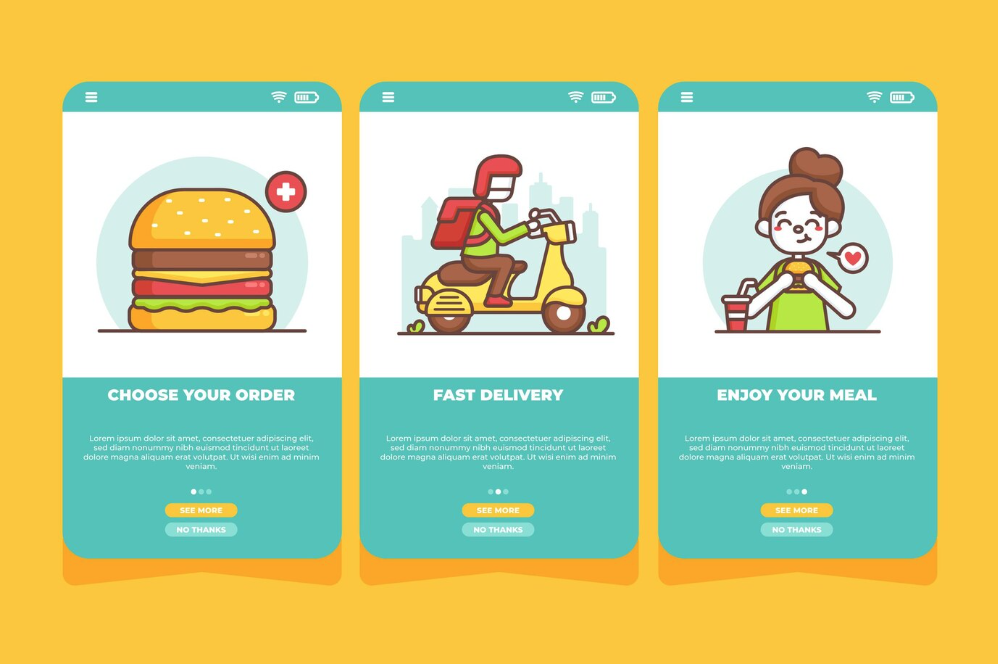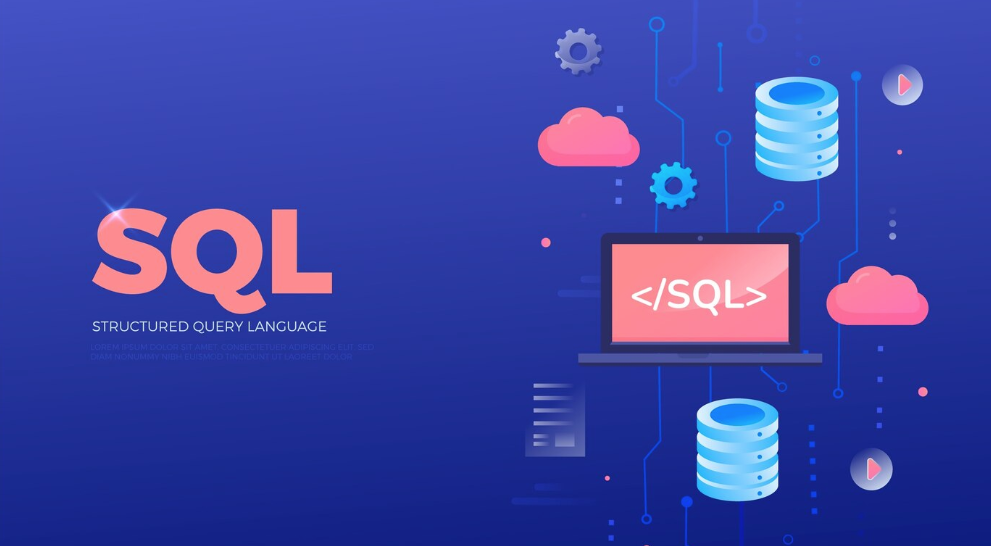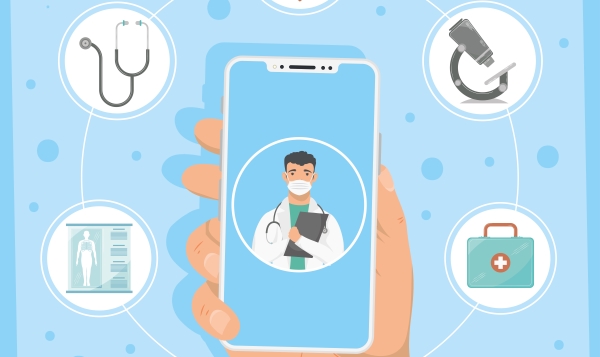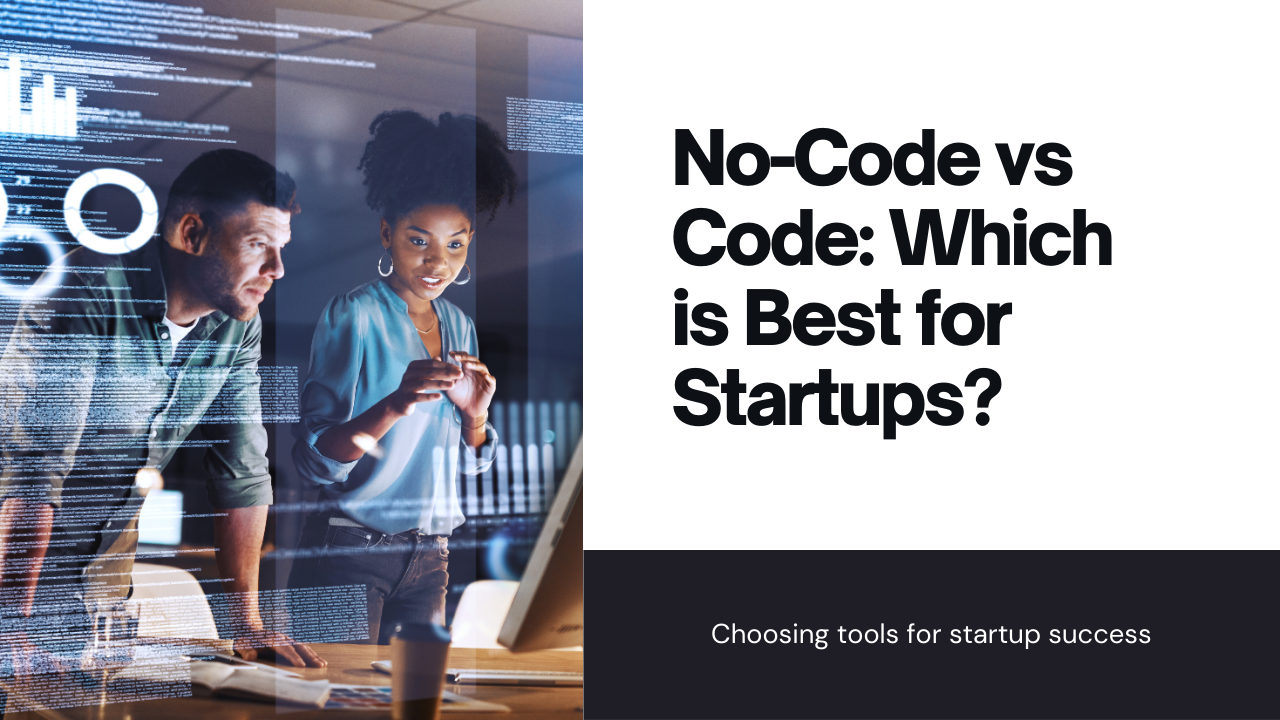Are you a food enthusiast with an entrepreneurial streak? Imagine revolutionizing how people order their favorite meals! If that resonates, it's time to delve into the world of food delivery app development. Our comprehensive guide offers an enticing journey through the intricacies of creating a food delivery app. From initial planning to ongoing maintenance and budgeting, we've got you covered. Crafting a successful food delivery app requires careful planning and execution. You'll need to grasp your target audience, select the right features, and ensure a seamless user experience. Our guide walks you through each step, providing practical tips and industry insights to navigate the app development landscape. Whether you're a seasoned developer or new to the app world, this guide equips you with the knowledge and tools to bring your food delivery app idea to life. Get ready for an exciting journey to app success!
Benefits of creating a food delivery app
In today's fast-paced world, convenience is key. A food delivery app offers immense benefits for both customers and restaurant owners. For customers, the convenience of ordering their favorite meals with a few taps on their smartphones is unbeatable. They can enjoy a wide variety of cuisines, browse through menus, and track their deliveries in real-time. On the other hand, restaurant owners can expand their customer reach, streamline their operations, and increase their revenue by partnering with a food delivery app. Additionally, a food delivery app allows restaurants to gather valuable data on customer preferences, enabling them to tailor their offerings and marketing strategies. Overall, a food delivery app opens up a world of opportunities for both customers and restaurant owners, making it a lucrative venture.
A food delivery app not only benefits customers and restaurant owners but also creates employment opportunities. With the increasing demand for food delivery services, more delivery drivers are needed to meet the growing orders. This opens up a new avenue for individuals looking for flexible work options. They can sign up as delivery partners with the food delivery app and earn income at their convenience. This gig economy model offers flexibility and freedom to individuals, making it an attractive option for those seeking additional income or a flexible work schedule. By creating a food delivery app, you contribute to job creation and empower individuals to earn a living on their terms.
Developing a food delivery app also allows you to tap into the growing trend of online food ordering. With people becoming more accustomed to online shopping and digital transactions, the demand for food delivery apps is on the rise. By creating an app that provides a seamless ordering experience, you can cater to this growing customer base and establish a strong presence in the market. The potential for growth and scalability is substantial, making it an exciting venture for aspiring entrepreneurs.
Market analysis and competitor research
Before diving into food delivery app development, it's crucial to conduct thorough market analysis and competitor research. Understanding the current landscape and identifying your competitors will help you position your app effectively and differentiate it from the rest. Start by

researching the popular food delivery apps in your target market. Analyze their features, user experience, pricing models, and marketing strategies. This will give you insights into what works well and what can be improved upon.
In addition to studying your competitors, it's essential to analyze the market demand and trends. Look for gaps and opportunities that you can leverage to create a unique selling proposition for your app. Consider factors such as the size of the target market, customer preferences, and any emerging trends. Are there specific cuisines or dietary preferences that are in high demand? Is there a need for a niche food delivery app catering to a specific audience? By conducting market analysis, you can identify untapped opportunities and tailor your app to meet the needs of your target audience effectively.
Another aspect to consider during market analysis is the regulatory landscape. Familiarize yourself with any local or national regulations related to food delivery services. Ensure that your app complies with these regulations to avoid any legal issues down the line. Understanding the market and your competition will provide a solid foundation for the development and success of your food delivery app.
Understanding the target audience
To create a successful food delivery app, you need to have a deep understanding of your target audience. Who are they? What are their preferences and pain points? By understanding your audience, you can tailor your app to meet their specific needs and deliver a user experience that exceeds their expectations.
Start by creating user personas that represent your target audience segments. Consider factors such as age, location, income, and lifestyle. This will help you gain insights into their preferences and behaviors. Conduct surveys or interviews to gather feedback directly from your potential users. This feedback will provide valuable insights into their expectations from a food delivery app and help you prioritize features and functionalities.
Another important aspect of understanding your target audience is identifying their pain points. What are the challenges they face when ordering food? Is it difficult finding specific cuisines or dietary options? Is it the lack of transparency in delivery times? By addressing these pain points, you can create a user-centric app that solves real problems and delivers a delightful experience.
Once you have a clear understanding of your target audience, you can design and develop your food delivery app to cater to their specific needs. By focusing on user experience and providing personalized recommendations, you can create a loyal customer base and differentiate yourself from the competition.
Features and functionality of a food delivery app
To create a successful food delivery app, you need to carefully select the features and functionalities that will enhance the user experience. While the core feature of any food delivery app is the ability to order food, there are several other features that can make your app stand out. Let's explore some essential features that you should consider incorporating into your app.

1. User registration and profile management: Allow users to create accounts, save their preferences, and easily manage their orders.
2. Restaurant listings and menus: Provide users with a comprehensive list of restaurants, along with their menus, cuisines, and pricing information. Make it easy for users to filter and search for their favorite restaurants.
3. Real-time order tracking: Keep users informed about the status of their orders. Provide them with real-time updates on the preparation, dispatch, and delivery of their meals.
4. Secure payment gateway: Ensure that your app supports secure and hassle-free payment options. Integrate popular payment gateways to offer convenience and trust to your users.
5. Ratings and reviews: Enable users to rate and review restaurants and delivery drivers. This helps in building trust and credibility within the app.
6. In-app chat and customer support: Provide users with a seamless way to communicate with customer support or restaurant staff. This can help resolve any issues or queries quickly.
7. Push notifications: Keep users engaged and informed about new offers, discounts, or order updates through push notifications. Personalize the notifications based on user preferences to increase engagement.
8. Social sharing and referrals: Encourage users to share their experiences on social media and refer friends to earn rewards or discounts. This helps in organic marketing and word-of-mouth promotion of your app.
By carefully selecting and implementing these features, you can create a food delivery app that provides a seamless and delightful experience for your users.
Choosing a technology stack for app development

Choosing the right technology stack is crucial for the successful development of your food delivery app. The technology stack refers to the combination of programming languages, frameworks, libraries, and tools that you choose to build your app. Consider factors such as scalability, security, and ease of development when selecting your technology stack.
For the backend development of your app, popular options include Node.js, Ruby on Rails, or Django. These frameworks offer scalability and ease of development, making it easier to handle a large number of concurrent users. For the frontend development, you can choose between React Native, Flutter, or native development for iOS and Android platforms. React Native and Flutter are cross-platform frameworks that allow you to build your app once and deploy it on multiple platforms, saving development time and effort.
When it comes to the database, you can choose between SQL or NoSQL databases based on your specific requirements. SQL databases like MySQL or PostgreSQL offer robustness and reliability, while NoSQL databases like MongoDB provide flexibility and scalability for handling large amounts of data.
Additionally, consider integrating third-party APIs for features like payment gateways, location tracking, or social media login. This can save development time and provide a seamless integration of essential functionalities.
By carefully selecting your technology stack, you can ensure that your food delivery app is built on a solid foundation and is scalable for future growth.
Developing the app: step-by-step process
The development process of a food delivery app can be divided into several steps. Let's walk through each step to give you a clear understanding of the development process.
1. Requirements gathering and planning: Define the scope, features, and functionalities of your app. Create wireframes and prototypes to visualize the user flow and interactions.
2. UI/UX design: Design the user interface and user experience of your app. Ensure that the design is intuitive, visually appealing, and aligns with your brand identity.
3. Backend development: Develop the server-side logic, APIs, and database architecture. Implement the features and functionalities defined in the planning phase.
4. Frontend development: Implement the user interface design and integrate it with the backend. Develop the app for iOS and Android platforms using the selected technology stack.
5. Testing and quality assurance: Conduct thorough testing to identify and fix any bugs or issues. Perform functional testing, usability testing, and performance testing to ensure a seamless user experience.
6. Deployment and launch: Deploy your app to the app stores, following the guidelines and requirements of Apple App Store and Google Play Store. Implement app store optimization techniques to increase visibility and downloads.
7. Post-launch monitoring and updates: Monitor the app performance, user feedback, and analytics. Continuously update and improve your app based on user feedback and market trends.
By following a systematic and well-defined development process, you can ensure the successful creation and launch of your food delivery app.
Testing and quality assurance
Testing and quality assurance are critical aspects of app development. Before launching your food delivery app, it's essential to conduct thorough testing to identify and fix any bugs or issues. Let's explore the different types of testing that should be performed during the development process.
1. Functional testing: Ensure that all the features and functionalities of your app are working as expected. Test different user scenarios and edge cases to identify any issues.
2. Usability testing: Test the user interface and user experience of your app. Gather feedback from real users to understand any usability issues and make improvements.
3. Performance testing: Test the performance of your app under different load conditions. Ensure that your app can handle a large number of concurrent users without any slowdowns or crashes.
4. Security testing: Test the security of your app to identify any vulnerabilities or potential security breaches. Implement proper encryption and authentication mechanisms to protect user data.
5. Compatibility testing: Test your app on different devices, operating systems, and screen sizes to ensure compatibility across a wide range of devices.
6. Localization testing: If you plan to launch your app in multiple countries or regions, perform localization testing to ensure that your app is properly translated and adapted to different languages and cultures.
By conducting thorough testing and quality assurance, you can deliver a high-quality app that provides a seamless and delightful experience for your users.
Maintenance and updates for a food delivery app
Once your food delivery app is launched, the work doesn't stop there. Ongoing maintenance and updates are crucial to ensure the smooth operation of your app and keep it up-to-date with the latest trends and technologies. Let's explore the different aspects of app maintenance and updates.
1. Bug fixes and performance improvements: Continuously monitor your app for any bugs or performance issues. Regularly release updates to fix these issues and improve the overall user experience.
2. Security updates: Stay updated with the latest security threats and vulnerabilities. Implement regular security updates to protect user data and ensure the integrity of your app.
3. Feature enhancements: Gather user feedback and analyze market trends to identify opportunities for feature enhancements. Continuously add new features and functionalities to keep your app competitive and engaging.
4. Server maintenance: Ensure that your server infrastructure is robust and scalable. Regularly monitor server performance and optimize it to handle increasing user loads.
5. App store optimization: Regularly update your app store listings with relevant keywords, screenshots, and descriptions. Implement app store optimization techniques to increase visibility and downloads.
By regularly maintaining and updating your food delivery app, you can ensure that it remains competitive, secure, and delivers a delightful user experience.
Budgeting for app development and ongoing expenses
Budgeting is a crucial aspect of app development. It's essential to plan and allocate your resources effectively to ensure the success of your food delivery app. Let's explore the different components of app development and ongoing expenses that you need to consider when budgeting.
1. Development costs: This includes the cost of hiring developers, designers, and testers. Depending on your location and the complexity of your app, development costs can vary significantly.
2. Technology stack: Some technology stacks may have licensing or subscription costs associated with them. Consider these costs when choosing your technology stack.
3. Infrastructure costs: If you choose to host your app on cloud servers, consider the costs associated with server hosting and maintenance. Cloud hosting platforms like AWS or Azure offer flexible pricing options.
4. Marketing and promotion: Allocate a budget for marketing and promoting your app. This can include social media advertising, influencer collaborations, or app store optimization services.
5. Ongoing maintenance and updates: Consider the costs associated with bug fixes, security updates, and feature enhancements. Depending on the complexity of your app, ongoing maintenance costs can vary.
6. Customer support: Allocate a budget for providing customer support to your app users. This can include hiring support staff or outsourcing customer support services.
7. App store fees: Both Apple App Store and Google Play Store charge fees for app submissions and updates. Consider these fees when budgeting for your app.
By carefully budgeting and allocating your resources, you can ensure that your food delivery app development stays within your financial limits and sets you up for success.
Creating a food delivery app is an exciting and rewarding venture. By following this comprehensive guide, you have gained valuable insights into the development, maintenance, and budgeting aspects of building a successful food delivery app. Remember to continuously adapt and improve your app based on user feedback and market trends. With careful planning and execution, your food delivery app can revolutionize the way people order their favorite meals. Happy app development!
For custom software development, visit us at Zee Palm
Check out free Flutter Components, visit Flutter Components Library







